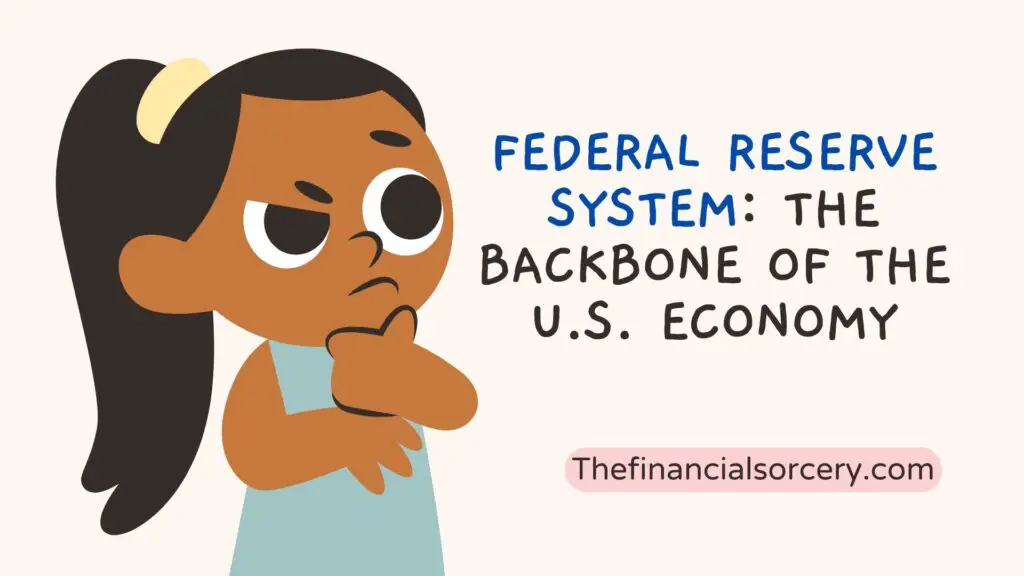Introduction: Unveiling the Federal Reserve System’s Vital Role
The Federal Reserve System, often referred to as the Fed, stands as the cornerstone of the United States’ economic framework. With its primary objective being the stability and growth of the nation’s economy, the Federal Reserve System plays a crucial role in regulating and overseeing monetary policy. In this article, we will delve into the inner workings of the Federal Reserve System, examining its functions, historical development, and the profound influence it has on the U.S. financial landscape. Let’s embark on this journey to unravel the mysteries behind the Federal Reserve System!

The Federal Reserve System: What It Represents
The Federal Reserve System is the central banking system of the United States, designed to ensure the stability and efficiency of the country’s monetary and financial systems. Established in 1913 through the Federal Reserve Act, this independent agency serves as the principal regulator of the U.S. banking industry. With its headquarters located in Washington, D.C., the Federal Reserve System consists of several key components that work harmoniously to fulfill its core responsibilities.
Structure and Components of the Federal Reserve System
The Federal Reserve System comprises three primary components:
- Board of Governors: This governing body consists of seven members appointed by the President of the United States and confirmed by the Senate. The board sets the monetary policy and oversees the activities of the Federal Reserve System.
- Regional Reserve Banks: There are twelve regional banks spread across major cities in the U.S., each serving as a decentralized arm of the Federal Reserve System. These banks conduct research, supervise financial institutions, and provide essential banking services to their respective districts.
- Federal Open Market Committee (FOMC): The FOMC consists of the members of the Board of Governors and select presidents of the regional reserve banks. It is responsible for formulating monetary policy, including decisions regarding interest rates and the purchase or sale of government securities.
Functions of the Federal Reserve System
The Federal Reserve System performs a variety of functions that contribute to the stability and growth of the U.S. economy. Let’s explore its key roles:
1. Monetary Policy Implementation
The Federal Reserve System has the crucial responsibility of formulating and implementing monetary policy to control inflation, stabilize prices, and maximize employment opportunities. By adjusting interest rates and managing the money supply, the Fed strives to maintain a balance between economic growth and price stability.
2. Banking Supervision and Regulation
One of the primary functions of the Federal Reserve System is the supervision and regulation of banks and financial institutions operating within the United States. Through the implementation of rigorous regulatory frameworks, the Fed ensures the safety and soundness of the banking system, thereby protecting depositors and maintaining public confidence.
3. Payment System Oversight
The Federal Reserve System plays a pivotal role in overseeing and managing the nation’s payment systems. By providing reliable and efficient payment services, such as electronic funds transfer and check clearing, the Fed facilitates the smooth operation of transactions within the economy.
4. Financial Stability Maintenance
Safeguarding the stability of the U.S. financial system is a crucial objective of the Federal Reserve System. The Fed continuously monitors financial markets, assesses risks, and implements measures to prevent disruptions that could have severe consequences for the overall economy.
5. Economic Research and Analysis
The Federal Reserve System conducts in-depth economic research and analysis to support its policymaking processes. By collecting and analyzing data on various economic indicators, the Fed gains insights into the current state of the economy, enabling informed decisions on monetary policy.
FAQs about the Federal Reserve System
- What is the main purpose of the Federal Reserve System? The main purpose of the Federal Reserve System is to promote the stability and growth of the U.S. economy by formulating and implementing monetary policy, supervising banks, maintaining financial stability, and overseeing the payment system.
- Who owns the Federal Reserve System? The Federal Reserve System is neither owned by any individual nor a private entity. It operates as an independent government agency, with its Board of Governors appointed by the President and confirmed by the Senate.
- How does the Federal Reserve System control interest rates? The Federal Reserve System controls interest rates primarily through open market operations, where it buys or sells government securities. By adjusting the supply of money in circulation, the Fed influences interest rates to achieve its monetary policy goals.
- Can the Federal Reserve System print money? While the Federal Reserve System has the authority to create money, it does not physically print it. Instead, it influences the money supply through mechanisms like open market operations and adjustments to reserve requirements.
- How does the Federal Reserve System combat inflation? The Federal Reserve System combats inflation by tightening monetary policy. It does this by raising interest rates, reducing the money supply, and implementing other measures to curb excessive price increases.
- What is the relationship between the Federal Reserve System and the U.S. government? The Federal Reserve System operates independently of the U.S. government, but it maintains a close relationship. The President appoints the members of the Board of Governors, and the Federal Reserve System is subject to oversight and accountability to Congress.
Conclusion: The Federal Reserve System’s Enduring Impact
The Federal Reserve System, with its far-reaching influence and multifaceted functions, remains an integral force driving the stability and growth of the U.S. economy. Through its strategic policies and regulatory frameworks, the Fed navigates the complexities of the financial landscape, ensuring the well-being of the nation’s monetary and financial systems. By maintaining stability, fostering economic growth, and safeguarding the interests of the public, the Federal Reserve System continues to uphold its vital role as the backbone of the U.S. economy.